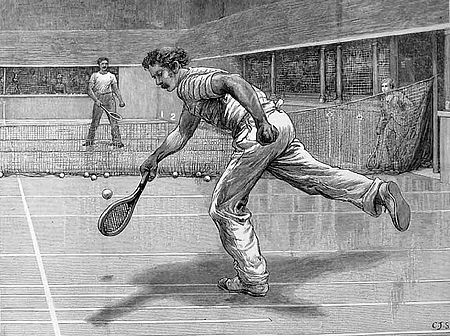Prince's Club
1888 establishments in England1940 disestablishments in EnglandDefunct real tennis venuesDefunct sports venues in LondonGentlemen's clubs in London ... and 9 more
History of tennisHistory of the City of WestminsterKnightsbridgeSport in the City of WestminsterSports clubs established in 1853Sports clubs established in 1888Sports clubs in LondonTennis clubsUse British English from June 2015

The Prince's Club was a socially exclusive gentlemen's multisports club in London, England. The original 'Prince's Club' was founded in 1853 in Chelsea by George and James Prince and its main sports were rackets and real tennis. Cricket, croquet and lawn tennis were also played. After most of its ground was lost to building developments it closed in 1887. Its successor, the 'New Prince's Club', located in Knightsbridge, opened in 1888 and kept its focus on rackets and real tennis, but no longer had any outdoor sports. In 1896 the Prince's Skating Club was opened. The Prince's Club was in operation until the 1940s.
Excerpt from the Wikipedia article Prince's Club (License: CC BY-SA 3.0, Authors, Images).Prince's Club
Knightsbridge, London Knightsbridge
Geographical coordinates (GPS) Address Website Nearby Places Show on map
Geographical coordinates (GPS)
| Latitude | Longitude |
|---|---|
| N 51.501388888889 ° | E -0.16333333333333 ° |
Address
The Knightsbridge
Knightsbridge 199
SW7 1SG London, Knightsbridge
England, United Kingdom
Open on Google Maps








